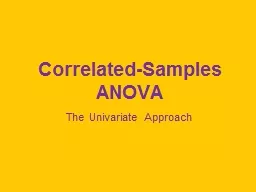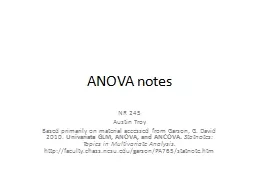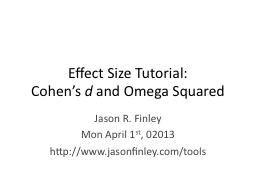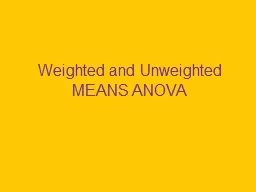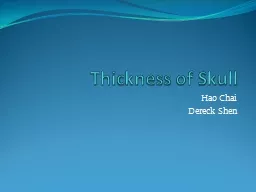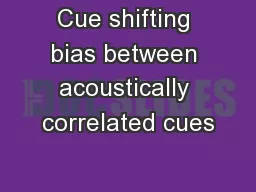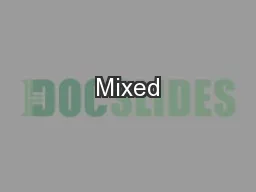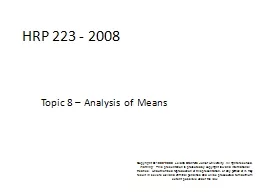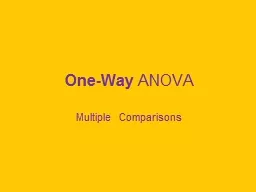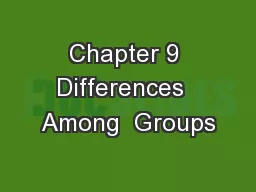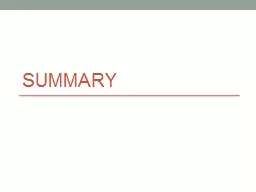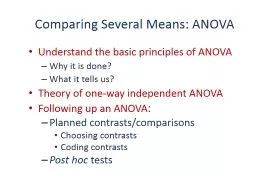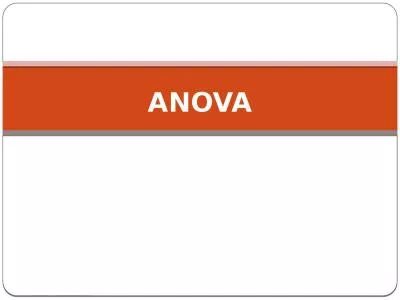PPT-Correlated-Samples ANOVA
Author : cheryl-pisano | Published Date : 2016-03-10
The Univariate Approach An ANOVA Factor Can Be Independent Samples Between Subjects Correlated Samples Within Subjects Repeated Measures Randomized Blocks Split
Presentation Embed Code
Download Presentation
Download Presentation The PPT/PDF document "Correlated-Samples ANOVA" is the property of its rightful owner. Permission is granted to download and print the materials on this website for personal, non-commercial use only, and to display it on your personal computer provided you do not modify the materials and that you retain all copyright notices contained in the materials. By downloading content from our website, you accept the terms of this agreement.
Correlated-Samples ANOVA: Transcript
Download Rules Of Document
"Correlated-Samples ANOVA"The content belongs to its owner. You may download and print it for personal use, without modification, and keep all copyright notices. By downloading, you agree to these terms.
Related Documents

